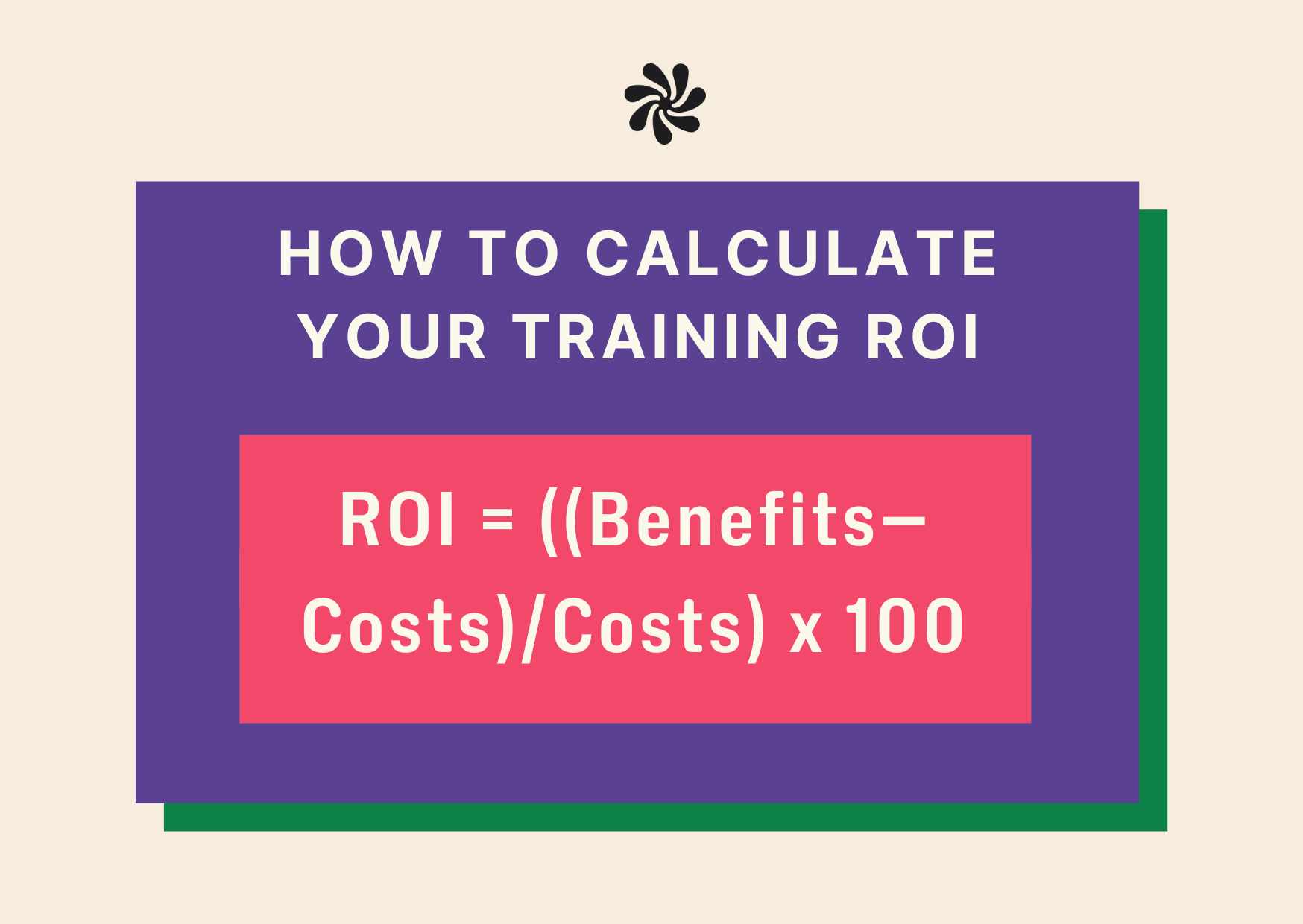What Metrics Should You Track to Determine ROI for Training Programs?
Last Updated Jan 28, 2025

If you’re trying to lose weight, the key metric you need to track is the number on the scale. If you’re trying to read more, you can track the sky-high pile of books on your bedside table as it starts getting smaller. Whatever your goal, you need to be able to measure progress.
When it comes to measuring the success of your HR training programs, knowing where to start can be challenging. By identifying and monitoring metrics, businesses can gain insights into the value delivered by their training programs. But which metrics matter most? How do you determine if a training initiative has a positive ROI?
Discover metrics that can help you effectively track your training programs.
What Is ROI for Training?
Return on Investment (ROI) for training measures how effectively a company’s investment in employee training programs translates into financial gains. It allows you to evaluate the return your business receives from employee training programs compared to the costs spent on the programing.

You can calculate the ROI of your training program with the following formula:
- ROI = ((Benefits—Costs)/Costs) x 100
For example, if your company spends $50,000 on a training program and sees an increase of $150,000 in productivity and reduced errors over the next year, the ROI calculation would be:
- ROI = ((150,000 −50,000)/50,000)) x 100 = 200%
This means your company gained two dollars for every dollar spent on training.
In this case, the training program has a positive ROI, so it was a good investment. If the training program doesn’t show a positive ROI, however, then you know it’s time to change tactics or cease that training.
Why Measure ROI for Training?
Assessing the ROI of training enables you to make data-driven decisions about future development opportunities. Training programs require significant investments in terms of time and finances, so businesses often want to focus these efforts on worthwhile programs. Taking the time to track metrics that illustrate the value of training can serve several critical purposes:
ROI measurement helps organizations determine the best use of resources. By identifying which training programs yield the highest returns, companies can focus their efforts on those that deliver the most value.
2. Performance Evaluation: Training aims to enhance employee skills and knowledge. Measuring ROI allows organizations to assess whether programs are improving efficiency and productivity.
In industries subject to regulations and standards, measuring ROI can help ensure compliance. By monitoring regulations and addressing gaps, organizations can mitigate risks associated with non-compliance.
Training can be costly, and organizations need to manage their budgets effectively. ROI assessment helps identify areas where expenses can be optimized, such as reducing turnover rates or minimizing errors.
Ultimately, ROI measurement reveals the impact of training on the bottom line. It quantifies the influence of training on sales conversion rates and revenue growth. That provides a clear picture of its contribution to business success.
Measuring ROI for training is not just a financial exercise — it's a strategic imperative. It empowers organizations to make informed decisions and maximize the effectiveness of their training programs, ensuring that investments in employee development align with broader business goals.
Metrics to Track to Calculate Your Employee Training ROI
Employee Performance Metrics
Evaluating employee performance is essential to determine whether training needs are met or need improvement. Leadership and organizational stakeholders will want to know that the programs they’ve invested in are effective. Key metrics for evaluating performance include:
- Training efficiency: Tracking the improvement in completion rates for training modules or assessments over time.
- Productivity levels: Measuring the frequency and quality of employee output over time.
- Compliance rates: Monitoring compliance with training requirements, such as corporate policies.
- Job proficiency ratings: Observing employee ability on essential tasks over time.
- Time to competency: Assessing the time it takes employees to achieve job proficiency or acquire new skills after training.
- Employee sales training surveys: Conducting employee surveys to gather feedback on training effectiveness and identify areas for improvement.
- Measuring knowledge retention post-training: Examining the “knowledge decay” rate for learners over time.
Once you collect data on your employee performance, you can run a cost-benefit analysis of the training investment. If, as a result of the training, there is an increase in employee retention of information, then you’re on the right track!
Customer Satisfaction Metrics
In addition to employee evaluation, it’s helpful to evaluate customer satisfaction. Through customer data collection, you’ll determine where and how your employee training impacts customers. Here are some of those metrics:
- Net Promoter Score(NPS): This widely used survey-based metric provides insights into overall satisfaction levels with products or the customer experience.
- Customer retention and churn rate: Tracking changes in how many customers stop purchasing products from your organization.
- Customer engagement metrics: Measuring critical indicators of how involved someone is with your company, including how many website sessions they have and how long they last.
- Customer reviews: Tracking customer reviews can help you identify areas for improvement or highlight successes that can be replicated.
- Customer feedback surveys: Monitoring changes in overall customer satisfaction ratings or responses to key questions on surveys over time.
If you don’t have enough customer data, consider implementing automated requests for customer feedback after every customer interaction. You could also incentivize your customers with special perks or discounts to get feedback engagement. This may be more work upfront, but the net benefit of this system is a more accurate look at the facts during your customer training evaluation.
Cost and Time-Saving Metrics
You can use various evaluation methods or a training ROI calculator to determine if training costs are too high. Whichever way you choose, focus your evaluation on the following metrics:
- Employee turnoverrates: Analyzing if individuals leave the company more or less often after training programs.
- Cost per hire: Tracking the cost of training over time can help you to identify areas where programs may be going over your budget.
- Revenue increase: Measuring changes in how much your organization makes over time, alongside the percentage of revenue directly attributable to training.
- Frequency of errors and workarounds: Monitoring the frequency of mistakes and workarounds in employee tasks over time can help to identify areas where training may be needed.
- Cycle times: Observing changes in average times for employee workflows can provide insights into how training is helping boost efficiency.
Revenue Growth Metrics
Ultimately, many leadership teams want to see that training programs have monetary value. To determine this, track the following metrics:
- Sales conversion rates: Tracking changes in sales conversion rates over time.
- Sales pipeline: Measuring the health of your organization’s sales pipeline can help you identify areas where deals get stuck.
- Average deal size: Observing average deal sizes over time can help identify the types of customers you serve.
- Total number of leads: Monitoring the number of leads over time can help you identify areas where employee training boosted lead generation.
By tracking these key metrics over time, employers can gain valuable insights into the effectiveness of their training programs in delivering ROI for their organization. Whatever goals your organization hopes to accomplish, employee training can be a powerful tool for driving results.
Using ROI Data to Add Wellness to Your Training and Development Programs
Tracking how your training provides real value to your company is a great way to increase the effectiveness of future programs. Training is only one area that your team could be looking at. One critical metric to consider as well is the health and wellness of your employees. One way to do that is to create wellness initiatives and measure the ROI for those. The good news is that most companies find a positive ROI for the resources they put into wellness programs.
In fact, 95% of companies tracking program ROI see positive wellness returns, according to Wellhub research. That means most organizations find these wellbeing programs to be valuable. In addition, 56% of companies see at least two times the returns from their wellbeing program investment. That’s a huge return on investment!
Ready to learn more about the benefits of wellness? Talk to a Wellbeing Specialist today!

Company healthcare costs drop by up to 35% with Wellhub*
See how we can help you reduce your healthcare spending.
[*] Based on proprietary research comparing healthcare costs of active Wellhub users to non-users.
You May Also Like
- A Secret Ingredient for Long-Term Success: Upskilling
- How to Build an Effective Employee Training & Development Program (6 Steps)
- On-the-Job Training (OJT) for Employees Old and New
References:
- What is Net Promoter Score®? Your introduction to NPS. (February 2, 2022). Hotjar. Retrieved on June 10, 2024 from https://www.hotjar.com/net-promoter-score/.
- 3 Data-Based Ways To Prove Training ROI (+ Free Training ROI Calculator). 360Learning. Retrieved June 10, 2024 from https://360learning.com/blog/prove-training-roi-calculator/.
Category
Share

The Wellhub Editorial Team empowers HR leaders to support worker wellbeing. Our original research, trend analyses, and helpful how-tos provide the tools they need to improve workforce wellness in today's fast-shifting professional landscape.
Subscribe
Our weekly newsletter is your source of education and inspiration to help you create a corporate wellness program that actually matters.
Subscribe
Our weekly newsletter is your source of education and inspiration to help you create a corporate wellness program that actually matters.
You May Also Like

Employee Training and Development Guide | Wellhub
Employee training prepares your staff to excel in their roles. Learn how to develop effective training programs that boost skills, performance, and retention.

Free HRCI Credits | Wellhub
Turbocharge your HR career - Unlock valuable HR certifications at zero cost with this comprehensive guide.

AI Trainings for Employees: An HR Guide | Wellhub
Discover how to implement AI training that enhances productivity and employee satisfaction.